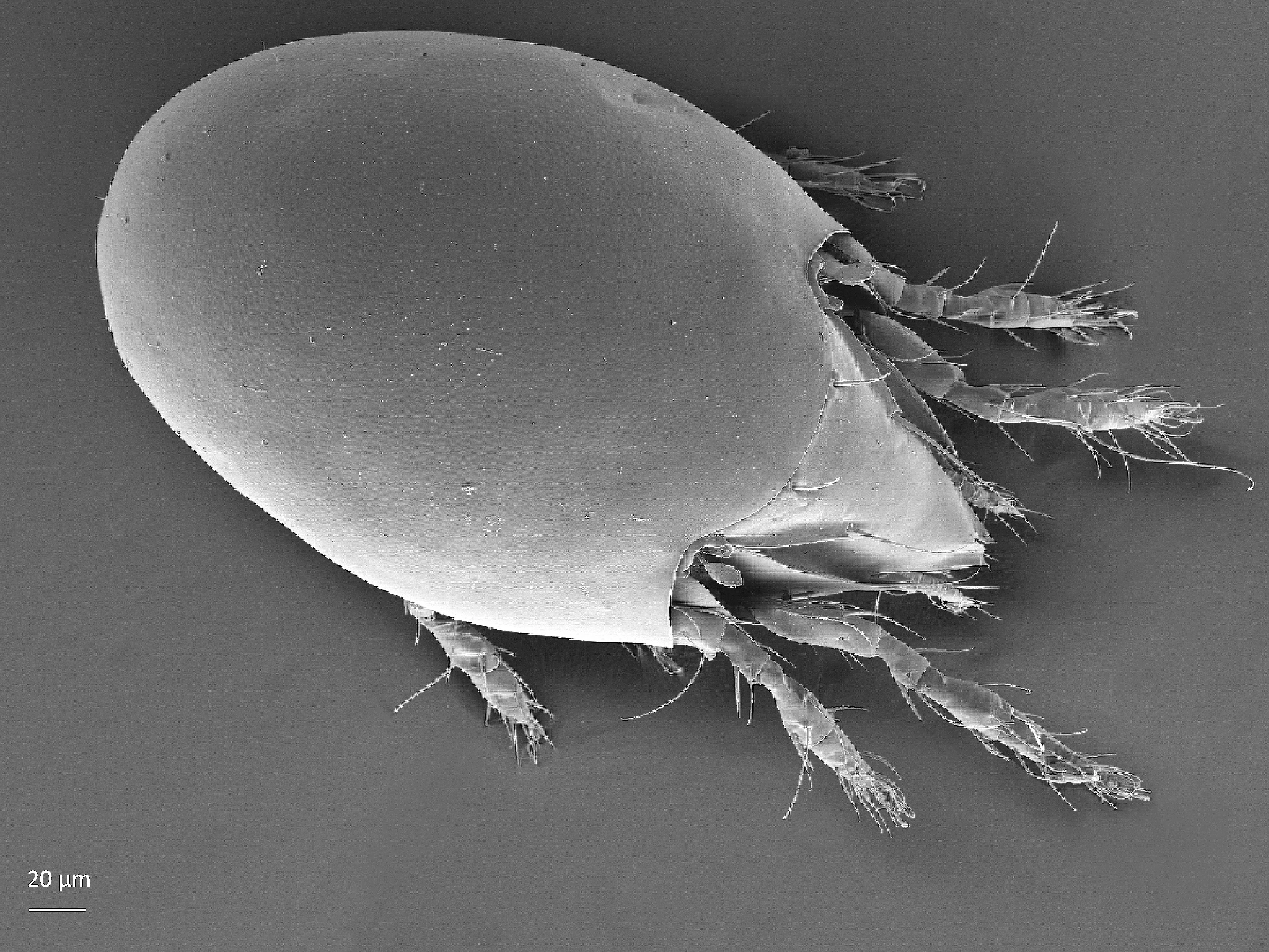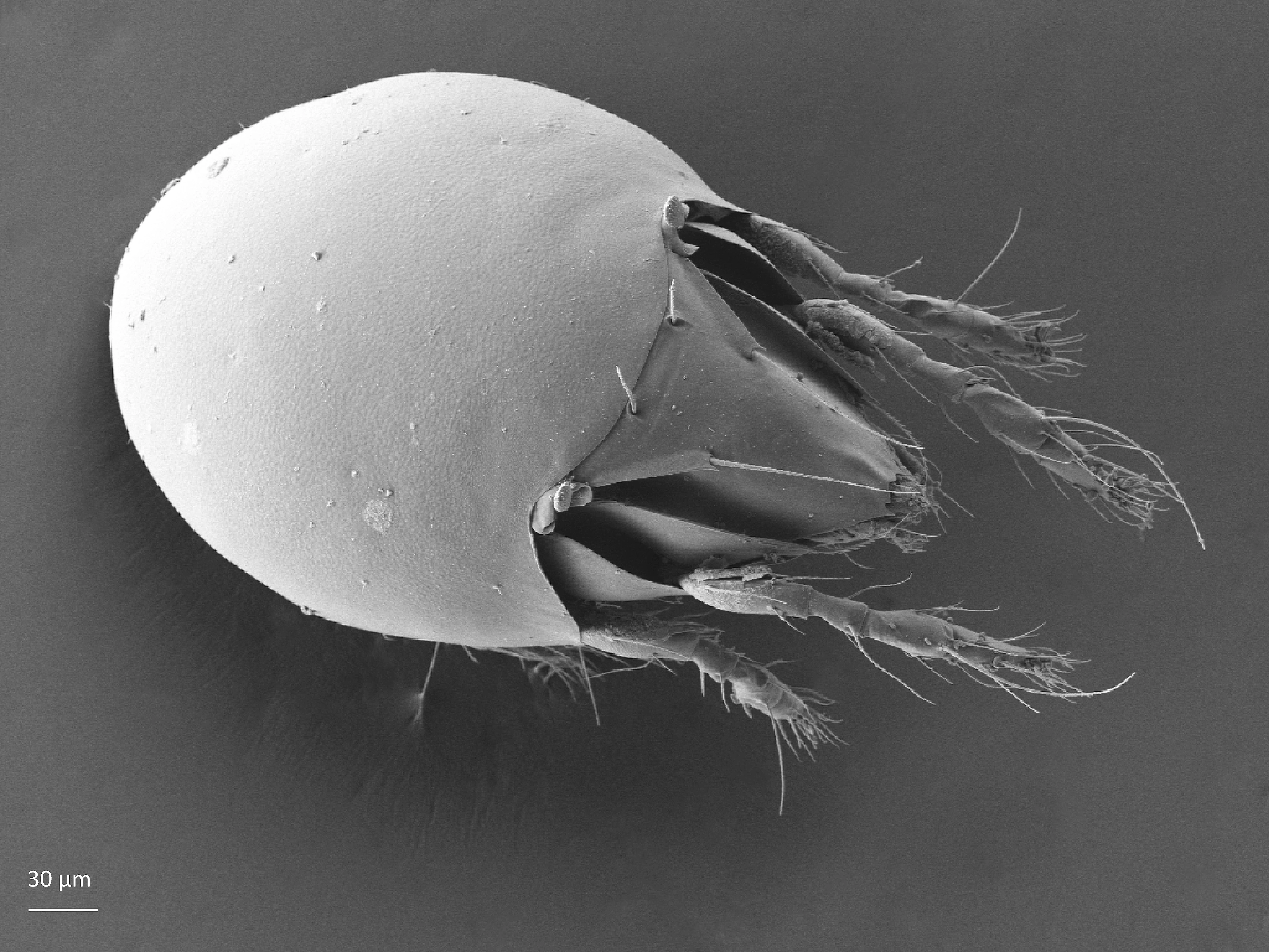Chamobatidae
The family Chamobatidae occurs worldwide except in Antarctica. These mites live in soils of forests, grasslands, peatlands, heathlands and in sand dunes. They reproduce sexually.
- Innhold
- Characteristics
- Habitat and ecology
The family Chamobatidae includes five genera, one subgenus and 45 species (Subías 2023).
Characteristics
The adults are usually small, but some are medium sized (290–700 µm long), and all species are brown. A pair of thin lamellae is situated laterally on the prodorsum, while the lamellar cusps and the translamella are absent. There is a pair of immovable pteromorphs, that are wing-like structures, on the notogaster. The notogaster has 10 pairs of setae, which are usually small or vestigial, and 4 pairs of porose areas (Weigmann 2006, Norton and Behan-Pelletier 2009, Behan-Pelletier and Lindo 2023).
Habitat and ecology
Chamobatidae species live in forest soil and litter, in mosses, wood, lichens, in peatlands, grasslands, heathlands and in sand dunes. They are primarily feeding on fungi and secondarily on decomposing plant matter (Weigmann 2006, Behan-Pelletier and Lindo 2023). Chamobatidae species reproduce sexually (Maraun et al. 2019).
The development of one of the species, Chamobates cuspidatus (Michael, 1884), was studied in the field in Denmark and the time from egg to egg lasted one year (Luxton 1981). Two other species, Chamobates rastratus (Hull, 1914) (mentioned as Chamobates spinosus Sellnick, 1928) and Chamobates subglobulus (Oudemans, 1900), were studied in the laboratory, and the time of development from egg to adult varied from 44 days (temperature not given) to 124 days at 18–20 °C (Grishina 1991, Pfingstl and Schatz 2021).
References
Behan-Pelletier VM and Lindo Z (2023). Oribatid Mites. Biodiversity, Taxonomy and Ecology. CRC Press, 508 pp.
Grishina LG (1991). The duration of oribatids (Sarcoptiformes, Oribatei) life cycle. Siberian Biological Journal 3, 38–47. [in Russian]
Luxton M (1981). Studies on the oribatid mites of a Danish beech wood soil. IV. Developmental biology. Pedobiologia 21, 312–340.
Maraun M, Caruso T, Hense J, Lehmitz L, Mumladze L, Murvanidze M, Nae I, Schulz J, Seniczak A and Scheu S (2019). Parthenogenetic vs. sexual reproduction in oribatid mite communities. Ecology and Evolution 9(12), 7324–7332. doi.org/10.1002/ece3.5303
Norton RA and Behan-Pelletier VM (2009). Suborder Oribatida. In: GW Krantz and DE Walter (eds.). A manual of Acarology, 3rd ed., Texas Tech. University Press Lubbock, 430–564.
Pfingstl T and Schatz H (2021). A survey of lifespans in Oribatida excluding Astigmata (Acari). Zoosymposia 20, 007–027. doi.org/10.11646/zoosymposia.20.1.4
Subías LS (2023). Listado sistemático, sinonímico y biogeográfico de los Ácaros Oribátidos (Acariformes, Oribatida) del mundo (1758−2002). Graellsia 2004, 60 (número extraordinario), 3−305. Updated 2023 – 18 actualization, 540 pp., access December, 2023.
Weigmann G (2006). Hornmilben (Oribatida). Die Tierwelt Deutschlands. 520 pp. Vol. 76, Goecke and Evers, Keltern.

